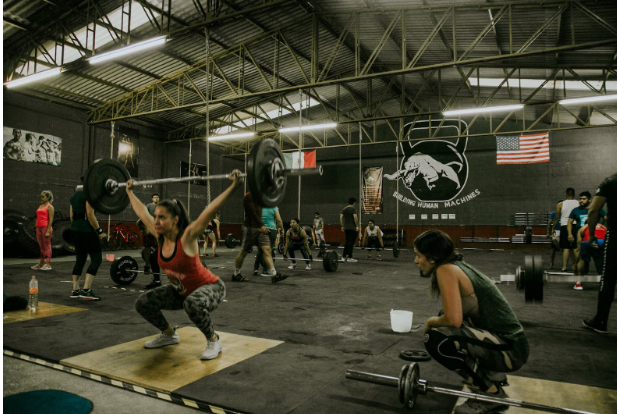Powerlifting is a demanding sport that requires significant strength and muscular endurance. To excel, you must prioritize recovery to build muscle and prevent injury.

Photo by Amar Preciado from Pexels
Muscle building and recovery are closely related because the muscle fibers tear and break down during a workout. Recovery time allows them to repair and build more muscle tissue, resulting in strength gains.
Without adequate recovery, muscle growth and strength gains could be compromised. As a result, the risk of injury may increase, hindering progress and overall performance.
Let’s explore various recovery strategies that powerlifters can incorporate into their training routines, such as nutrition, sleep, stretching and mobility, active recovery, and injury prevention techniques. By implementing these strategies, powerlifters can achieve their goals and improve their performance.
Recovery is critical for powerlifters to achieve their muscle-building goals and prevent injury. When you lift weights, your muscles undergo significant stress and damage. Without proper recovery, these muscles may not have the opportunity to repair and rebuild, leading to inadequate muscle growth and even muscle breakdown.
In addition to building muscle, recovery is also essential for injury prevention. Powerlifting requires athletes to lift heavy weights, which can put significant stress on joints and muscles. Over time, this stress can cause injury, particularly if the body does not have adequate time to recover between workouts.
Overtraining is a common problem among powerlifters who fail to prioritize recovery. It occurs when an athlete trains too frequently, with too much intensity or volume, without allowing adequate recovery time. This can lead to decreased performance, injury, and burnout.
To optimize recovery and prevent injury, powerlifters should implement a range of recovery strategies into their training routines. Below are among the most important.
Adequate protein intake is necessary to promote muscle repair and growth. Powerlifters should aim to consume 1.6-2.2 grams of protein per kilogram of body weight per day. Carbohydrates and healthy fats are also necessary for energy and overall health.
To support recovery, powerlifters should prioritize nutrient-dense foods such as lean meats, whole grains, fruits, and vegetables. Staying hydrated is also crucial to aid in muscle recovery and prevent muscle cramps.
Bodybuilding supplements can also help in recovery and muscle building. Protein powder, for example, is a convenient way to increase protein intake and support muscle repair and growth.
It is essential for recovery as it is the time when the body repairs and rebuilds muscle tissue. Powerlifters should aim for seven to nine hours of sleep per night. To optimize sleep quality, avoid caffeine and alcohol before bedtime, create a comfortable sleep environment, and establish a consistent sleep schedule.
These exercises can aid in recovery by increasing blood flow to the muscles, reducing muscle soreness, and preventing injury. Powerlifters should include dynamic stretching and foam rolling in their warm-up and static stretching in their cool-down. You might also want to incorporate high-intensity interval training, Pilates, and yoga in your fitness routine. Such exercises can help improve your flexibility and mobility.
It involves engaging in low-impact exercises such as walking, swimming, or cycling to promote blood flow, reduce muscle soreness, and aid in recovery. Powerlifters should aim to engage in active recovery on their rest days or as a warm-up or cool-down to their workouts.
By prioritizing injury prevention, powerlifters can continue to train and compete at a high level while avoiding setbacks and delays in their training. Here are some important things to keep in mind:
Powerlifters should focus on mastering proper form and technique before increasing weight. It is also important to avoid compensating for weak areas by overusing other muscles, as this can lead to injury.
Meanwhile, you should also work with a coach or trainer to ensure proper form and technique, particularly when performing the squat, bench press, and deadlift, the three main lifts in powerlifting.
These exercises can reduce the risk of injury by preparing the body for exercise and aiding in recovery. Powerlifters should engage in dynamic stretching and foam rolling as part of their warm-up and static stretching as part of their cool-down.
If an injury occurs, proper recovery is essential to prevent further damage and prevent re-injury. Powerlifters should consult with a medical professional to develop a recovery plan that includes rest, rehabilitation exercises, and a gradual return to training.
Powerlifters should also listen to their bodies and avoid pushing through pain, as this can exacerbate an injury or lead to further damage. It is important to take the necessary time to heal before returning to training to prevent re-injury.
By implementing these recovery and injury prevention strategies, powerlifters can achieve their goals and reach their full potential in the sport. Whether you're a seasoned powerlifter or just starting, prioritizing recovery and injury prevention is crucial to success in powerlifting.